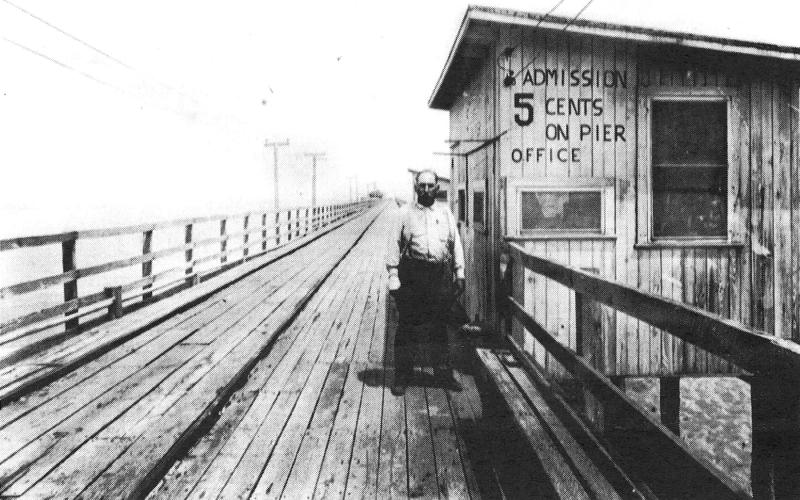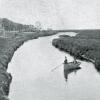Queen Anne Pier in early 20th Century Lewes
The Queen Anne Railroad was formed in 1894 to connect passengers from Baltimore, Md., to Cape May, N.J. The thought was to use a barge across the Chesapeake Bay, a train from Queenstown, Md., to Lewes, then a ferry across Delaware Bay to New Jersey. In Delaware, the line had stops in Greenwood, Ellendale and Milton, among others. The Queen Anne Pier was built in 1898 by William H. Virden. The 1,202-foot-long, 30-foot-wide pier stood between Savannah Beach and Johnnie Walker Beach.
In addition to serving the railroad, the pier also was used by tugs, pilot boats and other vessels. Fishermen also used it. A pair of disasters led to the downfall of the railroad. First, ice in the winter of 1903-04 blocked almost all traffic on the bay for nearly a month. Then a large section of Baltimore’s commercial district was destroyed by a fire in 1904. The route between Lewes and Cape May was discontinued, and the railroad was absorbed by the Maryland, Delaware and Virginia Railroad in 1905.
The pier was sold in foreclosure in 1924. After ice floes partly destroyed it in 1936, it was restored, but it was severely damaged again shortly after. By 1940, the pier was gone.
In its post-railroad years, the pier was used by locals for fishing and other activities. Capt. David Edwards, shown here, was the superintendent/custodian of the pier from 1915 until its final collapse. Edwards tried to collect 5 cents from everyone who walked onto the pier.
This information appears in Volume XVI of The Journal of the Lewes Historical Society.




















































